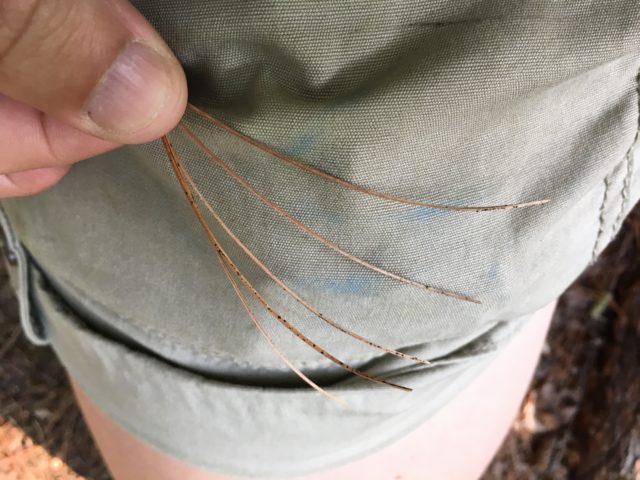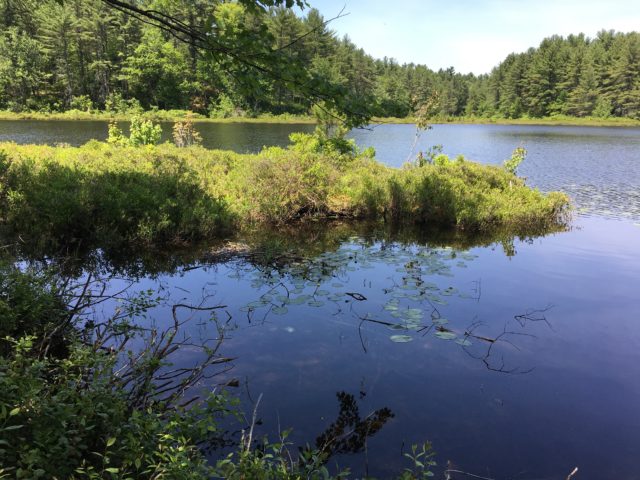By: Julia Boyer, Interpreter at Greenfield State Park
I hate to be the bearer of bad news, but summer is growing to a close. It’s getting colder, day camps are ending, and Greenfield State Park is beginning to wilt after all the excitement of summer. However, even though the blueberry season has come to its fruitful end, there are still some amazing plants that have been waiting for some attention here at Greenfield State Park. I’m not at liberty to reveal their exact locations because what fun would that be? But, by describing them, I will plant the seed for you, dear reader, to go out and find them yourself.
First on the list is an edible that is still holding out through August here at Greenfield. It is Indian Cucumber. Part of the lily family, this plant grows one array of seven to nine oval leaves close to the base before it sends up a stem with another set of three leaves at the top. By now the berries and flowers that help foragers identify them will be gone, but the basic shape remains. The root is only about 3 inches long at most, and it tastes like a mix between a cucumber and a carrot.
As a beginner forager, I’m still excited by plants that only require me to dig up the root and eat it, as you do with this plant. Plus, it is really tasty.
Where can you find it at Greenfield:
It likes to grow in the moist understory of forests.

Our next plant made the list for its historic importance. It is the largest tree in Greenfield State Park: a white pine. To tell a white pine from other pines, there needs to be five needles in each leaf cluster. This specific pine is estimated to be around 125 years old, meaning that this tree was around before Greenfield became a park! In fact, it would have started growing around the time that Ellis Island began operating to welcome immigrants to New York.
Where can you find it at Greenfield:
Pine trees like to grow in moist, acidic soils. This particular one is in a mixed forest of birch, pine, and maple.


We’ve come to the big finale; I saved the smallest and rarest for last. Here it is: Saracenia purpurea alias “frog britches” or “huntsmen’s bugle”. Any guesses? It’s the Northern Pitcher Plant. The most important thing to know is that it is a carnivorous plant. Using its tube-like shape and reddish color, they lure and trap insects at the bottom of their body where the prey is slowly digested. You can find them all over New Hampshire. However, they rely on bog environments which are not common in the southern region of the state, so this is a pretty special plant.
Where can you find them at Greenfield:
They like to be in constantly moist conditions, often associated with peat moss that also grows in bogs-or kettle-hole ponds. I have only seen one in the three months I have been working at Greenfield, so good luck botany lovers!

Although I can’t tell you exactly where to find these at Greenfield State Park, I can leaf you with one big hint: once you find one, you are well on your way to finding the others; your search is made easier because they are all on the same trail around Hogback Pond.

You may be thinking that now you are going to find them easily. It is still going to be very tricky. These plants are all shapes and sizes and have been hiding in plain sight here at Greenfield State Park all summer. So walk slowly and observe carefully during your botany-hunting hike. Happy looking!

